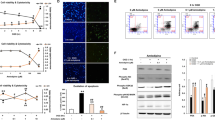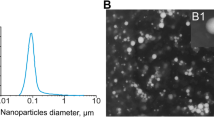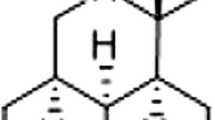Abstract
Objective
To determine whether sulforaphane (SFN) protects neurons against injury caused by oxygenglucose deprivation/reoxygenation (OGD/R) and, if so, to investigate the possible mechanisms.
Methods
Primary cultures of neurons were prepared from the cerebral cortex of 1-day-old Sprague-Dawley rats. On days 5–6 in vitro, the neurons were exposed to OGD for 1 h, followed by reoxygenation for 24 h. Cells were treated with 0, 0.1, 0.2, 0.5, 1, 2.5, or 5 μmol/L SFN, with or without 10 μmol/L LY294002, a PI3K-specific inhibitor, during OGD/R (a total of 25 h). After 24-h reoxygenation, MTT was used to assess viability and injury was assessed by Hoechst 33258/propidium iodide (PI) staining; immunofluorescence staining and Western blot were performed to detect molecular events associated with apoptosis.
Results
The MTT assay showed that 1 μmol/L SFN significantly increased viability, and Hoechst 33258/PI staining showed that the numbers of injured neurons were reduced significantly in the SFN group. Furthermore, immunofluorescence staining and Western blot showed that SFN increased Bcl-2 and decreased cleaved caspase-3 levels. Moreover, LY294002 inhibited the phosphorylated-Akt expression evoked by SFN, decreased Bcl-2 expression and increased cleaved caspase-3 expression.
Conclusion
SFN protects neurons against injury from OGD/R and this effect may be partly associated with an antiapoptosis pathway.
Similar content being viewed by others
References
Zhao J, Kobori N, Aronowski J, Dash P. Sulforaphane reduces infarct volume following focal cerebral ischemia in rodents. Neurosci Lett 2006, 393: 108–112.
Qu Y, Mao M, Zhao F, Zhang L, Mu D. Proapoptotic role of human growth and transformation-dependent protein in the developing rat brain after hypoxia-ischemia. Stroke 2009, 40: 2843–2848.
Zhang L, Qu Y, Tang J, Chen D, Fu X, Mao M, et al. PI3K/Akt signaling pathway is required for neuroprotection of thalidomide on hypoxic-ischemic cortical neurons in vitro. Brain Res 2010, 1357: 157–165.
Kumar S. Caspase function in programmed cell death. Cell Death Differ 2007, 14: 1432–1443.
Chan P. Mitochondria and neuronal death/survival signaling pathways in cerebral ischemia. Neurochem Res 2004, 29: 1943–1949.
Liu C, Wu J, Xu K, Cai F, Gu J, Ma L, et al. Neuroprotection by baicalein in ischemic brain injury involves PTEN/AKT pathway. J Neurochem 2010, 112: 1500–1512.
Dash P, Zhao J, Orsi S, Zhang M, Moore A. Sulforaphane improves cognitive function administered following traumatic brain injury. Neurosci Lett 2009, 460: 103–107.
Ping Z, Liu W, Kang Z, Cai J, Wang Q, Cheng N, et al. Sulforaphane protects brains against hypoxic-ischemic injury through induction of Nrf2-dependent phase 2 enzyme. Brain Res 2010, 1343: 178–185.
Brandenburg L, Kipp M, Lucius R, Pufe T, Wruck C. Sulforaphane suppresses LPS-induced inflammation in primary rat microglia. Inflamm Res 2010, 59: 443–450.
Heiss E, Herhaus C, Klimo K, Bartsch H, Gerhäuser C. Nuclear factor kappa B is a molecular target for sulforaphane-mediated antiinflammatory mechanisms. J Biol Chem 2001, 276: 32008–32015.
Lin W, Wu R, Wu T, Khor T, Wang H, Kong A. Sulforaphane suppressed LPS-induced inflammation in mouse peritoneal macrophages through Nrf2 dependent pathway. Biochem Pharmacol 2008, 76: 967–973.
Danilov C, Chandrasekaran K, Racz J, Soane L, Zielke C, Fiskum G. Sulforaphane protects astrocytes against oxidative stress and delayed death caused by oxygen and glucose deprivation. Glia 2009, 57: 645–656.
Soane L, Li Dai W, Fiskum G, Bambrick L. Sulforaphane protects immature hippocampal neurons against death caused by exposure to hemin or to oxygen and glucose deprivation. J Neurosci Res 2010, 88: 1355–1363.
Yang L, Zhu X, Tso M. Role of NF-kappaB and MAPKs in lightinduced photoreceptor apoptosis. Invest Ophthalmol Vis Sci 2007, 48: 4766–4776.
Gamet-Payrastre L. Signaling pathways and intracellular targets of sulforaphane mediating cell cycle arrest and apoptosis. Curr Cancer Drug Targets 2006, 6: 135–145.
Zhang Y, Talalay P, Cho C, Posner G. A major inducer of anticarcinogenic protective enzymes from broccoli: isolation and elucidation of structure. Proc Natl Acad Sci U S A 1992, 89: 2399–2403.
Noyan-Ashraf M, Sadeghinejad Z, Juurlink B. Dietary approach to decrease aging-related CNS inflammation. Nutr Neurosci 2005, 8: 101–110.
Bhuiyan MI, Islam MN, Jung SY, Yoo HH, Lee YS, Jin C. Involvement of ceramide in ischemic tolerance induced by preconditioning with sublethal oxygen-glucose deprivation in primary cultured cortical neurons of rats. Biol Pharm Bull 2010, 33: 3311–3317.
Brewer G. Serum-free B27/neurobasal medium supports differentiated growth of neurons from the striatum, substantia nigra, septum, cerebral cortex, cerebellum, and dentate gyrus. J Neurosci Res 1995, 42: 674–683.
Tauskela J, Brunette E, Monette R, Comas T, Morley P. Preconditioning of cortical neurons by oxygen-glucose deprivation: tolerance induction through abbreviated neurotoxic signaling. Am J Physiol Cell Physiol 2003, 285: C899–C911.
Xiang J, Tang YP, Zhou ZY, Wu P, Wang Z, Mori M, et al. Apocynum venetum leaf extract protects rat cortical neurons from injury induced by oxygen and glucose deprivation in vitro. Can J Physiol Pharmacol 2010, 88: 907–917.
Wang ZF, Zhou J, Tang XC. Huperzine B protects rat pheochromocytoma cells against oxygen-glucose deprivation-induced injury. Acta Pharmacol Sin 2002, 23:1193–1198.
Zhao J, Moore A, Redell J, Dash P. Enhancing expression of Nrf2- driven genes protects the blood brain barrier after brain injury. J Neurosci 2007, 27: 10240–10248.
Wong WW, Puthalakath H. Bcl-2 family proteins: the sentinels of the mitochondrial apoptosis pathway. IUBMB Life 2008, 60: 390–397.
Green D, Reed J. Mitochondria and apoptosis. Science 1998, 281: 1309–1312.
Shacka J, Roth K. Regulation of neuronal cell death and neurodegeneration by members of the Bcl-2 family: therapeutic implications. Curr Drug Targets CNS Neurol Disord 2005, 4: 25–39.
Kowaltowski A, Castilho R, Vercesi A. Mitochondrial permeability transition and oxidative stress. FEBS Lett 2001, 495: 12–15.
Ashe PC, Berry MD. Apoptotic signaling cascades. Prog Neuropsychopharmacol Biol Psychiatry 2003, 27: 199–214.
Guan QH, Pei DS, Liu XM, Wang XT, Xu TL, Zhang GY. Neuroprotection against ischemic brain injury by SP600125 via suppressing the extrinsic and intrinsic pathways of apoptosis. Brain Res 2006, 1092: 36–46.
Zhao J, Yu S, Zheng W, Feng G, Luo G, Wang L, et al. Curcumin improves outcomes and attenuates focal cerebral ischemic injury via antiapoptotic mechanisms in rats. Neurochem Res 2010, 35: 374–379.
Zhao J, Zhao Y, Zheng W, Lu Y, Feng G, Yu S. Neuroprotective effect of curcumin on transient focal cerebral ischemia in rats. Brain Res 2008, 1229: 224–232.
Yu S, Zhao J, Zheng W, Zhao Y. Neuroprotective effect of 4- hydroxybenzyl alcohol against transient focal cerebral ischemia via anti-apoptosis in rats. Brain Res 2010, 1308: 167–175.
Wen X, Huang Y, Wang J. Erythropoietin preconditioning on hippocampus neuronal apoptosis following status epilepticus induced by Li-pilocarpine in rats through anti-caspase-3 expression. Neurol India 2006, 54: 58–63.
Li L, Qu Y, Mao M, Xiong Y, Mu D. The involvement of phosphoinositid 3-kinase/Akt pathway in the activation of hypoxiainducible factor-1alpha in the developing rat brain after hypoxiaischemia. Brain Res 2008, 1197: 152–158.
Luo H, Hattori H, Hossain M, Hester L, Huang Y, Lee-Kwon W, et al. Akt as a mediator of cell death. Proc Natl Acad Sci U S A 2003, 100: 11712–11717.
Author information
Authors and Affiliations
Corresponding authors
Rights and permissions
About this article
Cite this article
Wu, X., Zhao, J., Yu, S. et al. Sulforaphane protects primary cultures of cortical neurons against injury induced by oxygen-glucose deprivation/reoxygenation via antiapoptosis. Neurosci. Bull. 28, 509–516 (2012). https://doi.org/10.1007/s12264-012-1273-z
Received:
Accepted:
Published:
Issue Date:
DOI: https://doi.org/10.1007/s12264-012-1273-z




